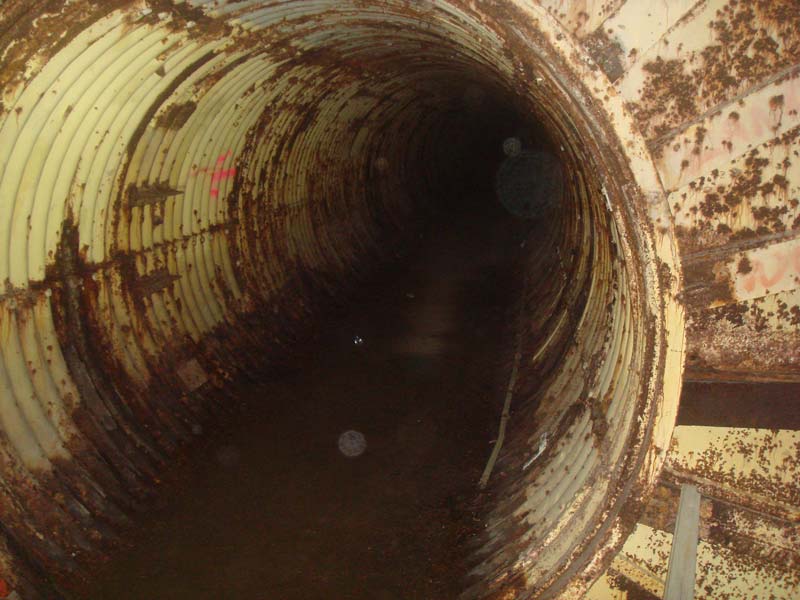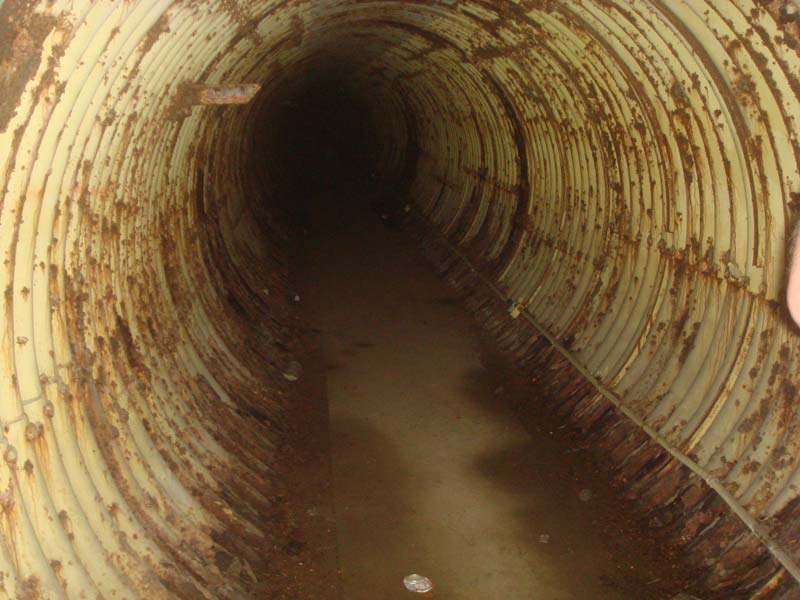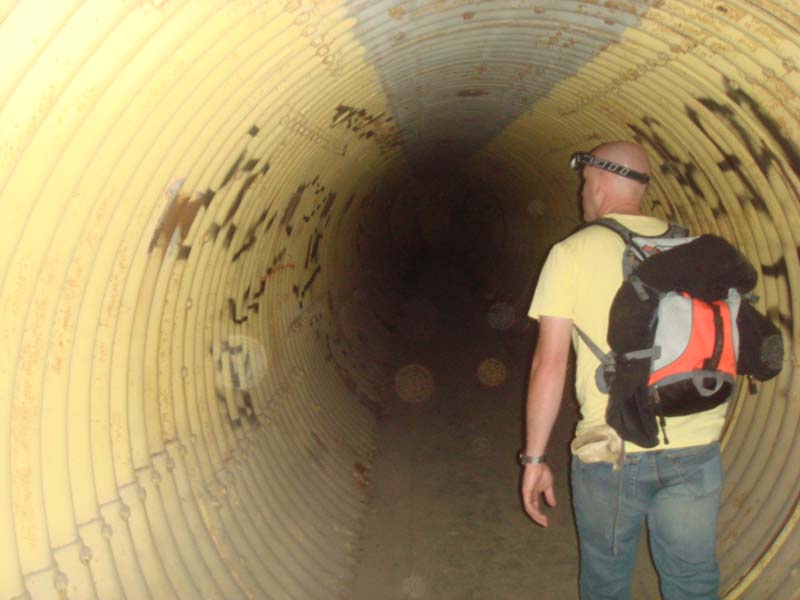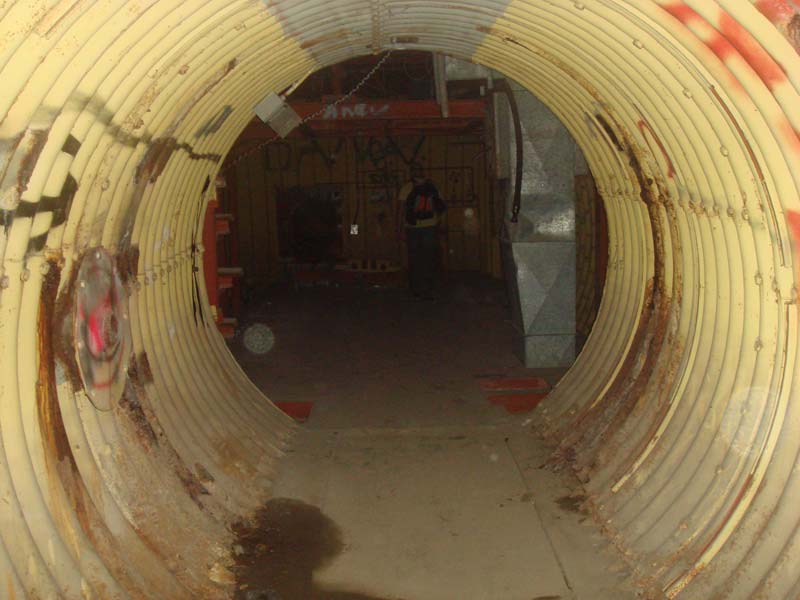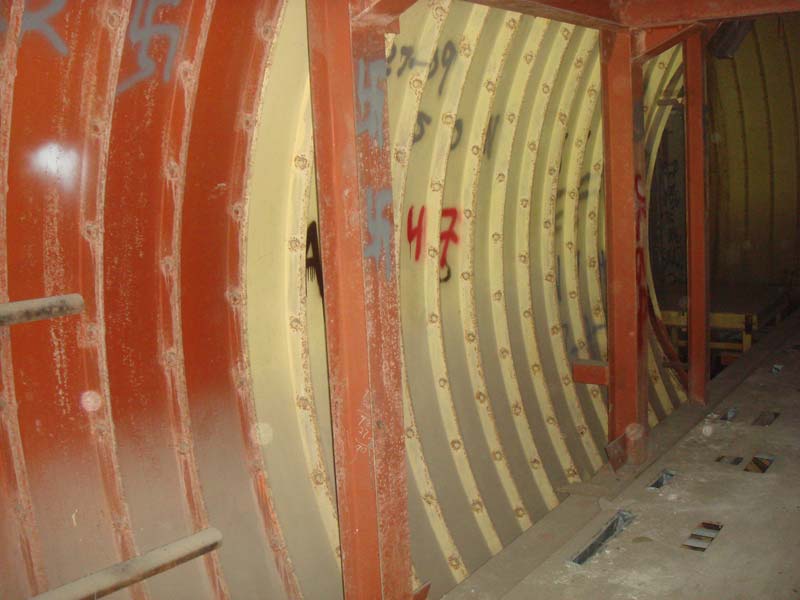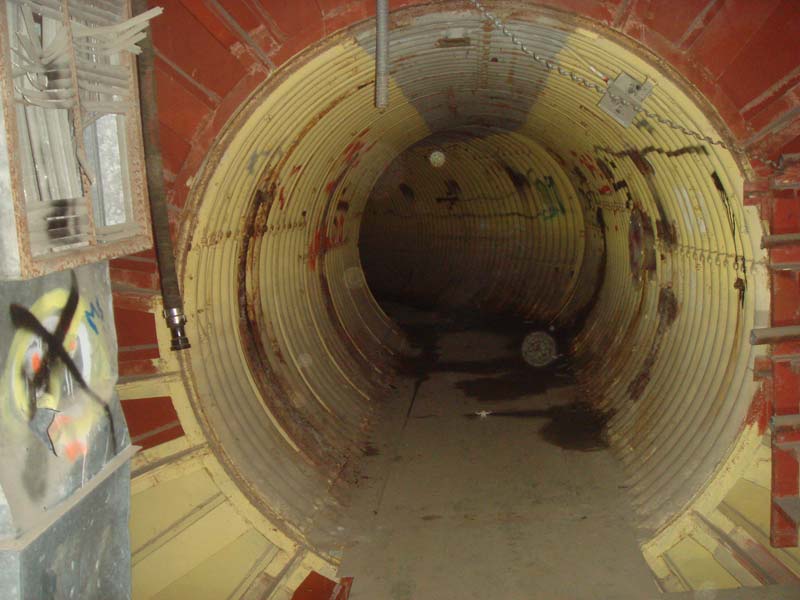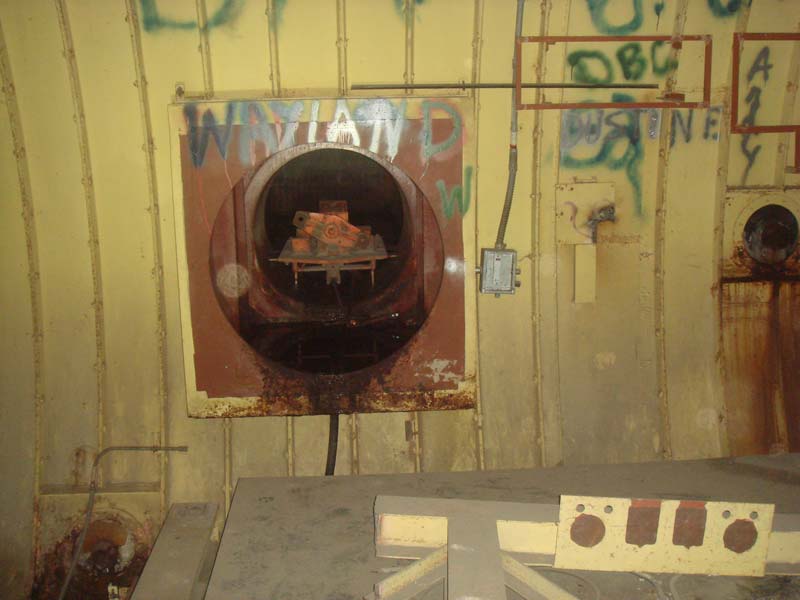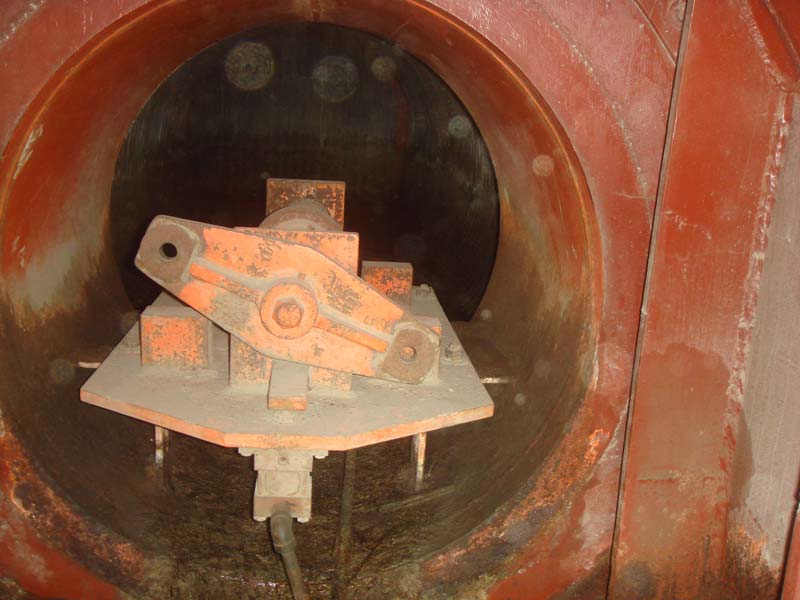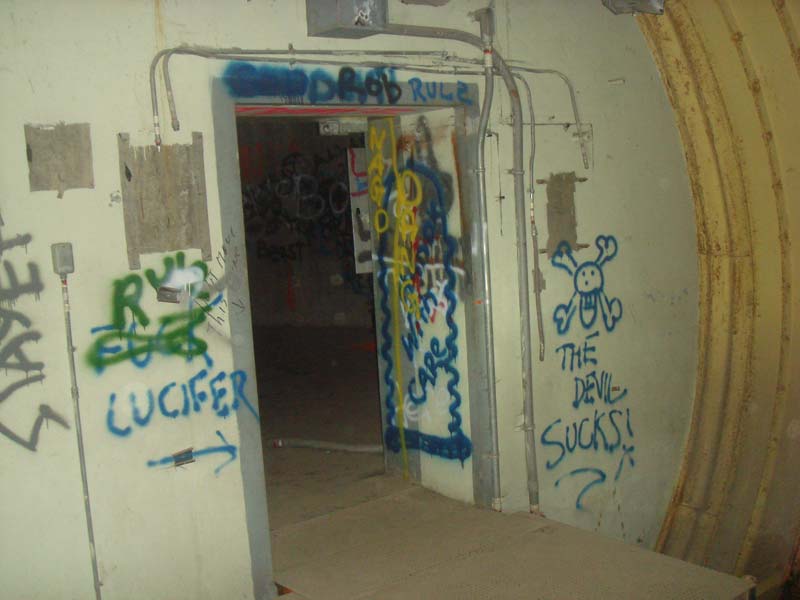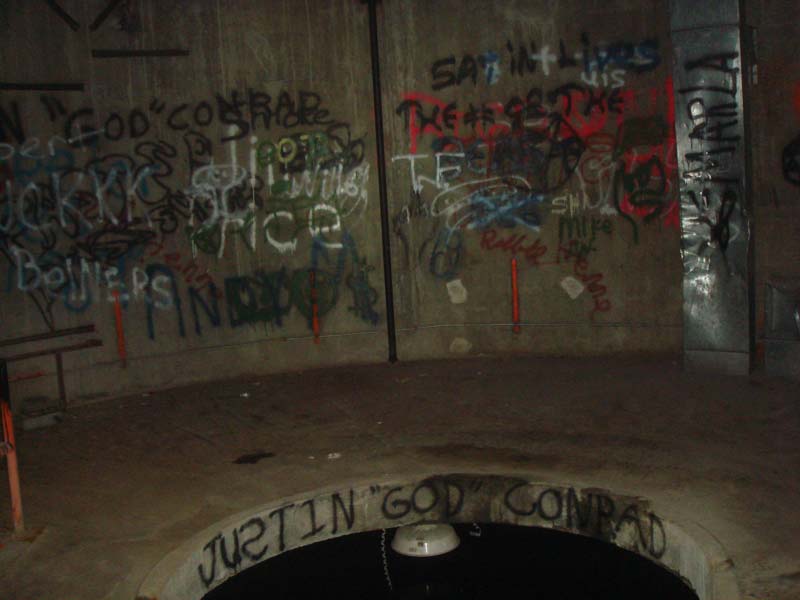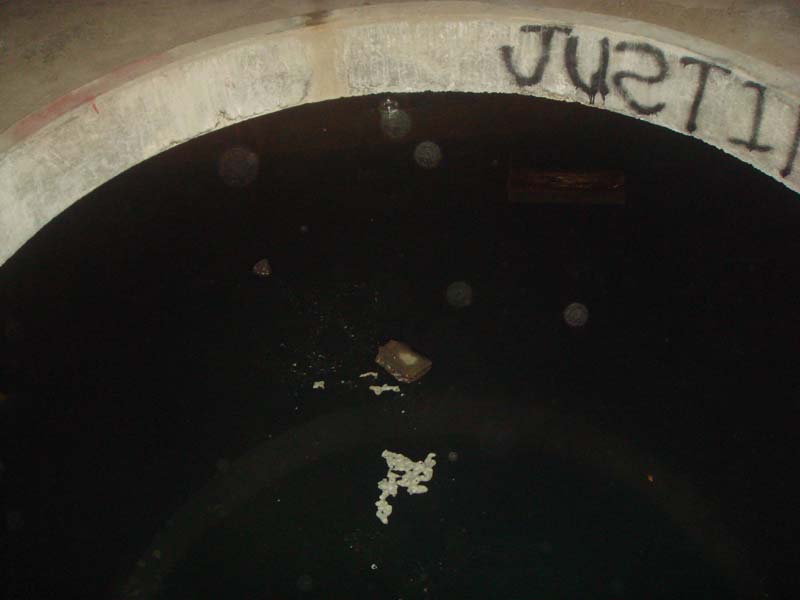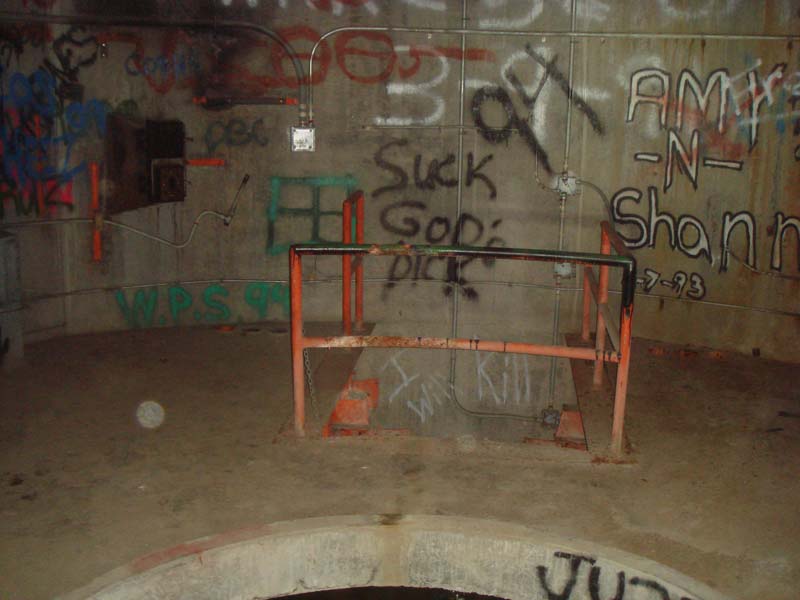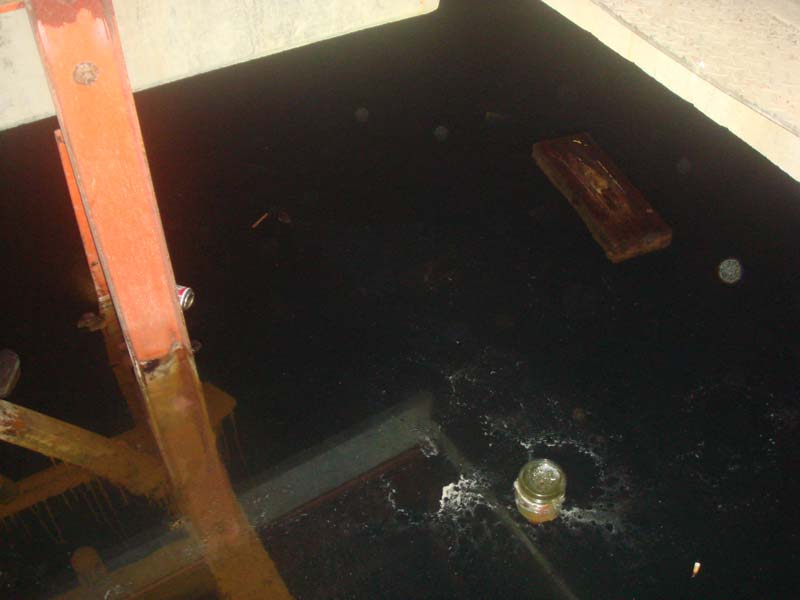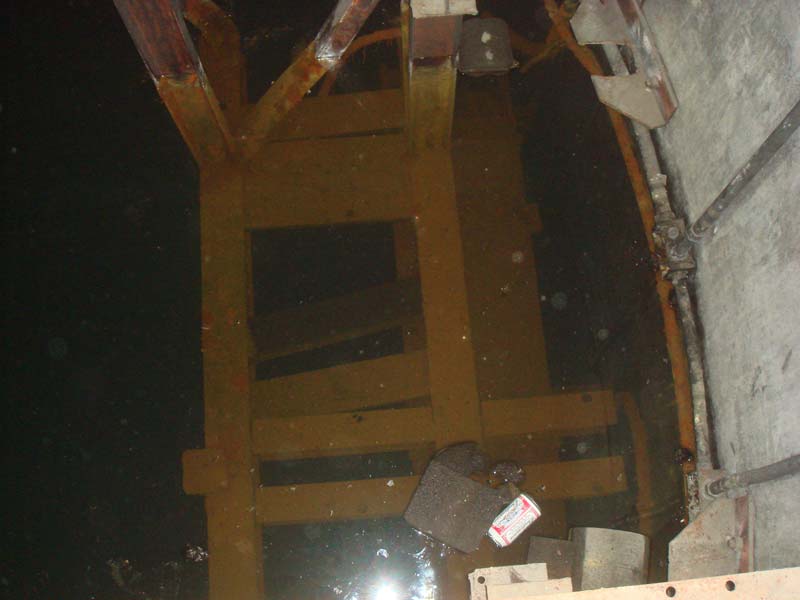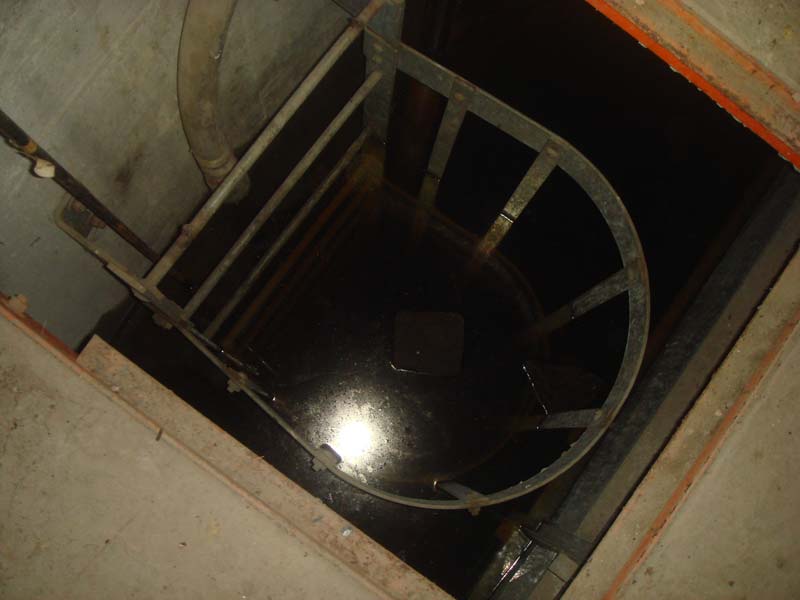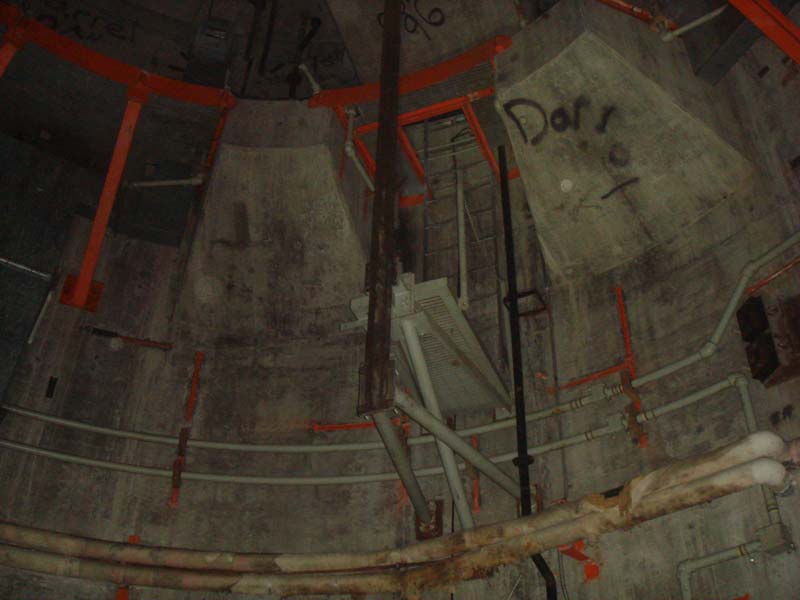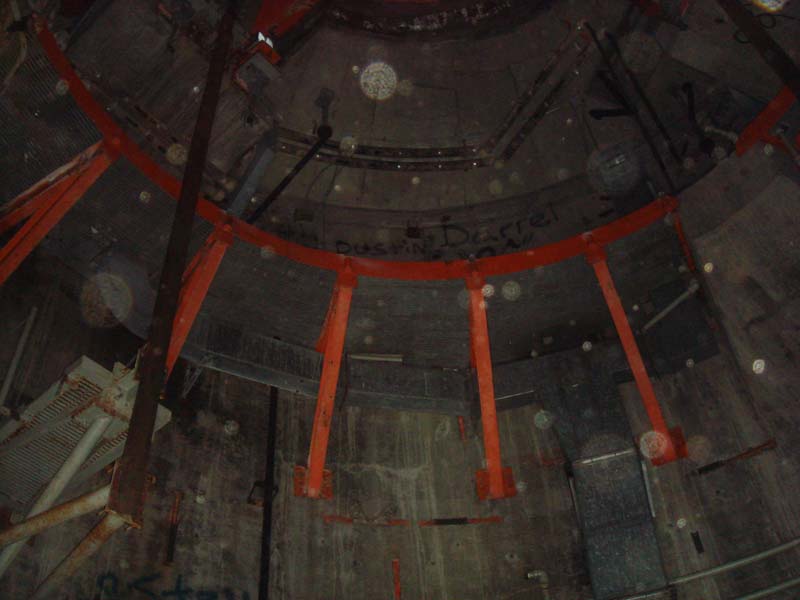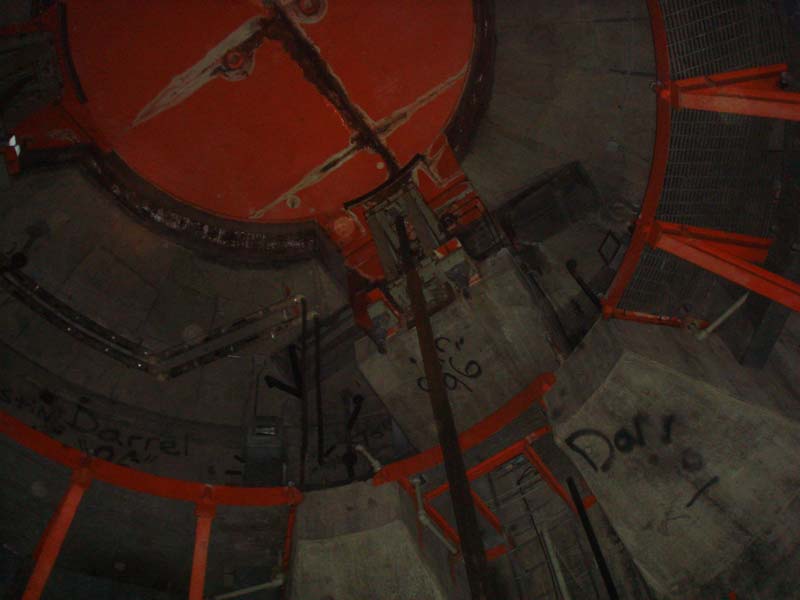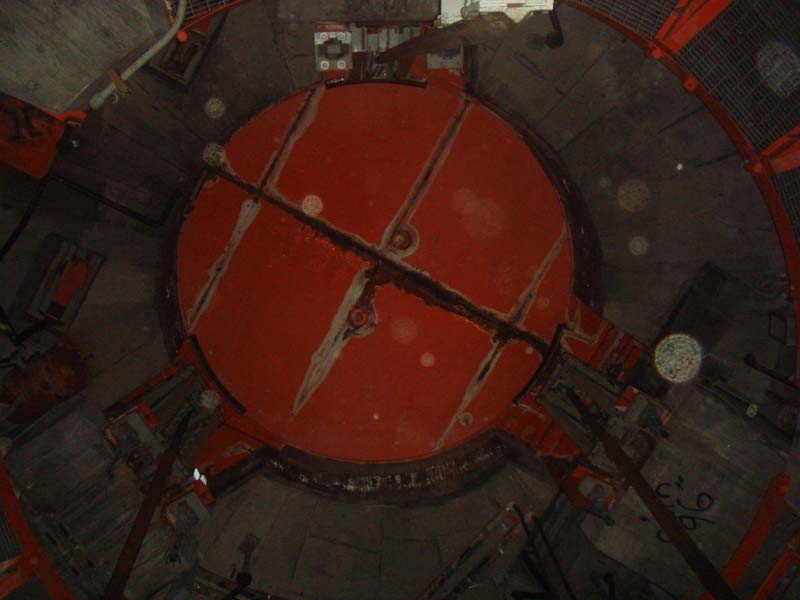
|
||||||||||||||||
|
This Adventure:
_____________
Part 06 _____________
|
||||||||||||||||
|
Radio Underground Returning to the main junction, there was only one avenue left to us: the antenna tunnel. At the end of this seemingly endless conduit lay the antenna terminal and its twin silos, each 27 feet in diameter and about 65 feet deep, and, if I had to guess, full of water. The tunnel itself wasn't in terrible shape, there was some seepage, sure, but it wasn't flooded, filled with dirt or debris or leaking too badly. I'd seen far worse: a tunnel blocked by junk from other parts of the complex and various garbage piled up and set alight leaving a light-swallowing matte black coating of soot on the tunnel walls. I've seen a few tunnels like the antenna tunnel at Lowry 724-C which exhibits pronounced deformation at the main junction caused by compression over time by the enormous weight of earth resting on it. This site seemed much better in that regard. The tunnel appeared nice and round and the concrete floor wasn't fractured though there was a bit of moisture seeping in somewhere. The mouth of the tunnel looked pleasingly symmetrical as the group headed in, making the long trek down it to the accompaniment of our echoing footfalls. Typically, the antenna tunnel provides little scenery-- even before they were scrapped the tunnels were pretty barren. There were several pipes on the left: hot and cold water supply lines and a sanitary sewer line that shunted to the surface along the route; on the right were several cable trays carrying power and signals to the antenna terminal and silos. Aside from lighting above, an odd fire extinguisher and electrical outlet, there really wasn't anything else for a few hundred feet along the way. All of that was gone here. Not one damn thing was left behind in the antenna tunnel. They took everything-- well, okay, the truly observant will see a bit of conduit in the first three photos, but after a ways even that was gone. As you can see, there's not too much to say about the tunnel itself as it is a pretty featureless tube of corrugated steel hundreds of feet long and 9.5 feet in diameter. Nevertheless, I did my level best to take quick and dirty photos of every inch of the damn thing as we strode quickly along. Up ahead the voices of the others faded into the distance leaving only the sound of our own footfalls on the rough concrete lining the floor. As always, I hoped that the area ahead would be somewhat intact and provide an interesting contrast to the empty tube we were traversing. For a long way, there was little change in the empty tunnel. The only features to be seen were peeling paint and mottles of rust and scabby, burnt spots where the scrappers' torches had left their mark. The Vanishing Point No matter how many times I walk down an antenna tunnel I always find myself thinking: "Damn this tunnel is a lot longer than I remember!" This occasion was no different and I squinted, looking off into the distance trying to see the end, but no dice. I snapped perhaps a few too many shots of barren tunnel along the way, but I figure hey, you never know when you're going to wish you had taken more photos. Eventually the familiar right hand jog just before the antenna terminal came into view and my heart sped up in skeptical anticipation of what I might find there. We took the corner, my breath held unconsciously in anticipation... Well damn! Another stripped terminal. I've seen far worse, at least they left the floor at this one. I've been at another site where there is a five foot drop entering the terminal and it was necessary to find something to use as a step just to climb back up out of there!
Under the circumstances, there isn't much to tell about this area except that there once used to be two rows of guidance equipment that controlled and supported the antennas.
At the crux of the antenna terminal, the walkway leads off in each direction to the blast doors where the antennas had been.
The opening of a vent shaft can be seen in the photo above leading some 60 feet to the surface. I would not recommend trying to enter through one of these vertical shafts. There are people who might still be alive today had they not tried to enter a Titan 1 or other missile site through a vertical shaft.
The antenna silos themselves had been pretty busy with cat walks, rails and a bunch of nifty gear, but once again, this place was stripped really badly leaving only half-witted graffiti on the walls. Inside the silos and beneath the floor, there is a mysterious area some 25 feet below the floor that contained some mechanical and pneumatic equipment for raising the antennas to the surface along with sump pumps to keep water out. I have yet to encounter a site where this area was not flooded!
As you can see here, this site is just as flooded as the rest with murky, cold water repelling my terrible curiosity to see what, if anything might still be down there. Since it is an area that is left kind of blank on the blueprints, they don't offer much insight into this area either.
I keep hoping for a site where this area is magically dry, but since it is a low spot where everything drains to, I think it unlikely that I'll ever get a good look down there unless someone sumps out all the water first. For now, these murky photos of soggy steel beams are all I can see of the lower portion of the antenna silos.
This large open area in the center of the antenna silo is where the antenna and its elevating mechanism used to reside, waiting for action. I have seen the empty platform that supported the antenna at a couple sites, but here it has been removed from both silos.
Where do we go from here? Well, I rather skipped how we arrived some 60-odd feet underground and began blithely traipsing (yes traipsing!) about in this underworld of asbestos and intrusive ground water. I have exhausted all avenues from the main tunnel junction, and as the launcher tunnels are blocked, I'll have to go topside to get to them. So next time we make our way back to the surface and have a look around for the way to reach the launcher silos.
|
||||||||||||||||

